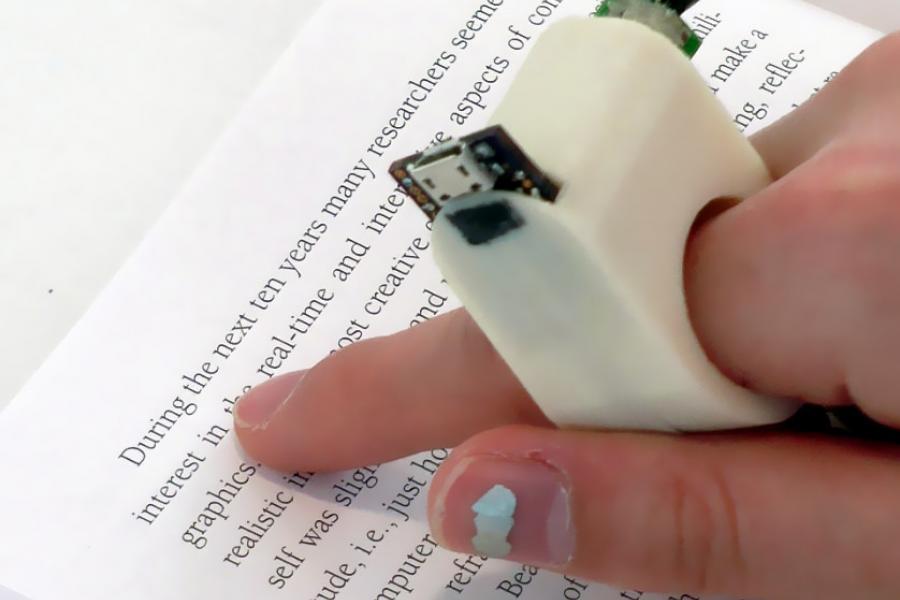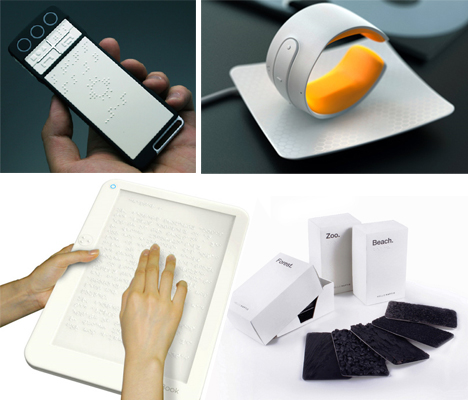Assistive Technology for the Blind: Tools to Transform Lives
Assistive Technology for the Blind: Tools to Transform Lives
Blog Article
Discover Cutting-edge Devices Designed for the Aesthetically Impaired
The advancement of cutting-edge devices for the visually impaired represents a significant advancement in accessibility and self-reliance. Technologies such as clever glasses with AI capacities and mobile applications created to provide auditory descriptions are improving day-to-day experiences for individuals.
Smart Glasses for Navigating

Smart glasses designed for navigating are changing the way aesthetically damaged people engage with their atmosphere. These innovative tools utilize a mix of electronic camera technology, synthetic knowledge, and acoustic responses to provide real-time info about surroundings. By employing obstacle detection systems, wise glasses can inform individuals to potential threats, enabling more secure flexibility in both familiar and strange setups.
The combination of GPS technology further boosts navigation capabilities, enabling individuals to obtain auditory instructions as they move. This hands-free method not just cultivates self-reliance but additionally encourages aesthetically impaired people to browse city landscapes with enhanced self-confidence. In addition, many smart glasses are outfitted with functions that determine landmarks and road signs, providing contextual information that enhances the individual experience.
Moreover, the development of these tools is continually progressing, with business functioning to enhance the accuracy of object recognition and broaden the range of navigational features. As clever glasses come to be extra easily accessible and economical, they hold the prospective to considerably transform day-to-day live for visually impaired customers. Inevitably, these cutting-edge tools represent a critical action toward inclusivity, offering improved wheelchair and a higher feeling of freedom for individuals navigating the world around them.

Mobile Application for Daily Living
Just how can mobile applications boost the every day lives of aesthetically damaged people? Mobile apps are transforming the method visually impaired users navigate their environments, take care of daily jobs, and gain access to info. These applications supply vital support via various performances, cultivating independence and improving high quality of life.
A number of cutting-edge mobile applications are developed particularly for daily living. As an example, apps like Be My Eyes attach visually damaged individuals with sighted volunteers via video calls, allowing them to obtain real-time support with jobs such as reading labels or browsing unknown rooms. Likewise, Seeing AI, established by Microsoft, makes use of fabricated intelligence to describe surroundings, reviewed text, and determine items, effectively transforming a smartphone into a powerful device for day-to-day assistance.
In addition, navigating apps customized for the visually damaged, such as Aira and BlindSquare, provide audio-based instructions and ecological info, making it possible for users to traverse their environments safely and confidently. Beyond navigation and immediate aid, mobile apps additionally sustain organization and task management, with features that aid customers set pointers, develop to-do checklists, and track appointments. In recap, mobile applications function as vital resources, equipping visually damaged individuals to lead even more independent and fulfilling lives.
Wearable Technologies for Support
Empowerment through innovation is progressively obvious in the world of wearable gadgets created to aid aesthetically damaged people. These innovative devices incorporate effortlessly right into life, improving navigation and offering vital feedback to individuals. For example, clever glasses outfitted with video cameras can read and acknowledge faces text out loud, allowing customers to interact even more with confidence in specialist and social setups.
Another significant improvement is the usage of haptic responses systems in wearable devices. These systems use vibrations or various other tactile signals to convey details concerning the individual's setting, such as challenges or modifications in surface, boosting wheelchair and security. Wearable technologies also consist of wristbands that connect to mobile phones, signaling customers to notifications via subtle resonances, hence boosting connection without reliance on aesthetic hints.
As these modern technologies proceed to advance, they are not just boosting self-reliance for aesthetically damaged individuals however additionally fostering a greater sense of addition in culture. By bridging the void between challenges dealt with in day-to-day living and the capacity for autonomy, wearable innovations serve as crucial devices in the mission for equal rights and empowerment for those with aesthetic disabilities.
Sound Description Tools
Sound description tools play a vital role in enhancing availability for aesthetically damaged people, offering them with the capacity to involve with aesthetic media. Wearable technology for low vision. These tools use narrated descriptions of key visual components in movies, tv shows, and live efficiencies, guaranteeing that users can totally understand the context and emotions conveyed through visuals
Audio description can be integrated into various systems, including streaming services, movie theater testings, and live theater. Numerous prominent streaming services now include audio description as an access attribute, permitting customers to select it quickly. Along with mainstream Braille displays and notetakers media, specialized apps likewise exist, giving audio descriptions for art events, galleries, and other social occasions.
The performance of audio description pivots on the ability of the narrators, who must share visual information succinctly without taking away from the initial sound. Innovations in this field are additionally leading the way for even more tailored experiences, where customers can change the level of information and pacing according to their choices.
Braille Innovations and Instruments
Braille advancements and gadgets have actually significantly changed the means aesthetically damaged individuals communicate with text and info. Modern developments have led to the advancement of flexible tools that enhance literacy and freedom among individuals.
Additionally, portable Braille notetakers integrate standard Braille input with contemporary functionalities, helping with note-taking, scheduling, and document modifying on the go. Mobility aids for visually impaired users. These compact gadgets often include text-to-speech capacities, connecting the void in between Braille and acoustic information
Additionally, innovative Braille printers have actually arised, enabling customers to produce Braille labels, papers, and educational products successfully. This accessibility promotes better engagement in academic and specialist settings, ultimately promoting inclusivity.
Furthermore, research right into smart Braille innovations remains to increase. Devices that integrate expert system are being checked out to supply real-time navigating support and contextual information, enhancing the individual experience in varied setups. On the whole, these technologies reflect a dedication to encouraging visually damaged individuals via modern technology, guaranteeing they can quickly access and involve with the globe around them.

Final Thought
The advancement of ingenious tools for the visually damaged dramatically improves self-reliance and lifestyle. Smart glasses, mobile applications, wearable modern technologies, audio description devices, and Braille technologies jointly empower people by giving necessary navigating help, environmental understanding, and enhanced analysis experiences. These innovations not just foster better inclusion but additionally advertise autonomy in everyday tasks, eventually adding to a much more equitable and accessible culture for aesthetically damaged individuals. Continued development in this field holds assurance for further enhancements.
As clever glasses end up being much more budget-friendly and available, they hold the possible to substantially change daily life for aesthetically impaired users. Mobile apps are changing the means visually damaged individuals navigate their atmospheres, handle everyday tasks, and gain access to details. Apps like Be My Eyes connect aesthetically damaged users with sighted volunteers using video clip phone calls, permitting them to get real-time help with tasks such as reading tags or browsing strange spaces.Additionally, navigating apps tailored for the visually damaged, such as Aira and BlindSquare, use audio-based instructions and environmental details, allowing users to traverse their environments safely and confidently.The development of ingenious tools for the visually damaged considerably improves self-reliance and high quality of life.
Report this page